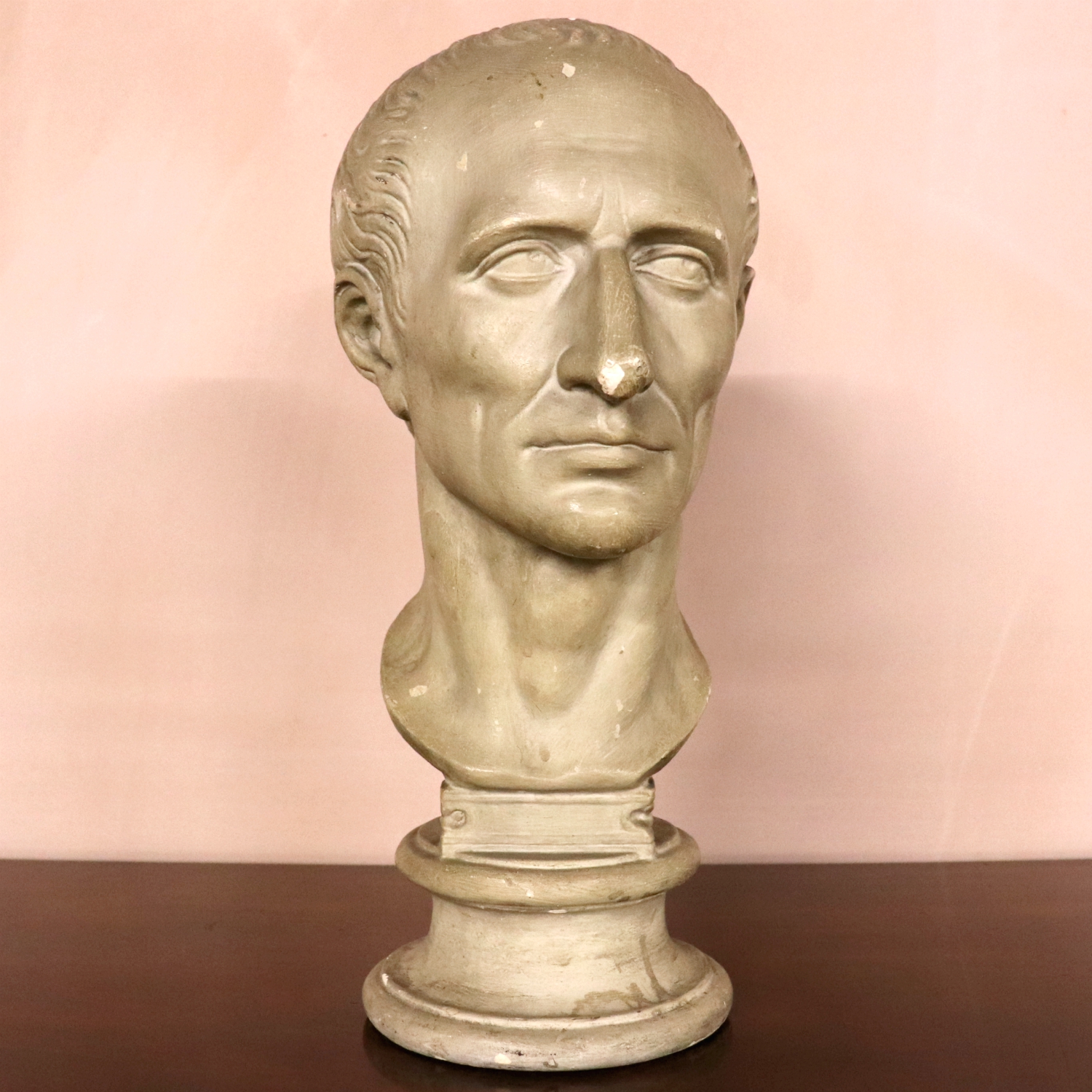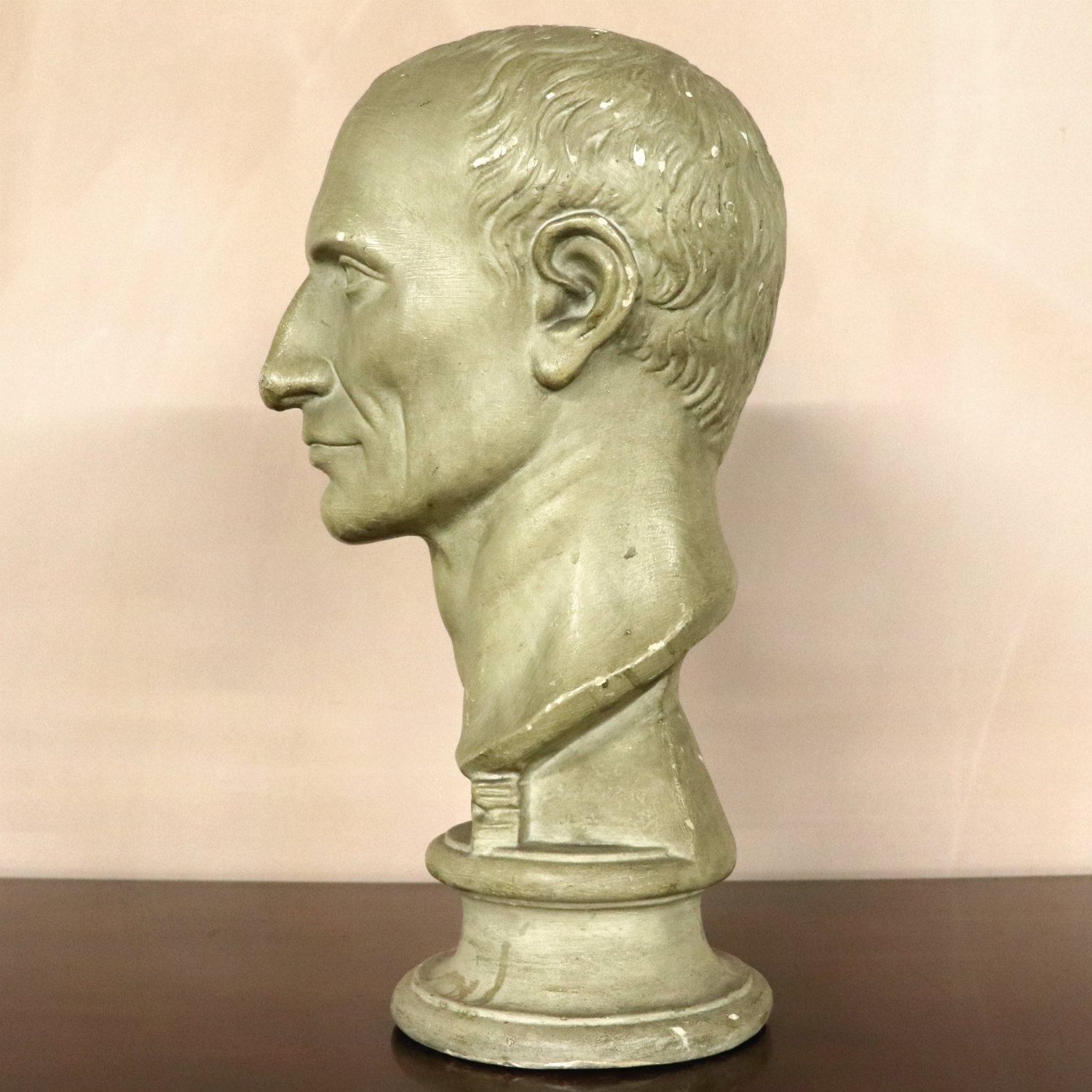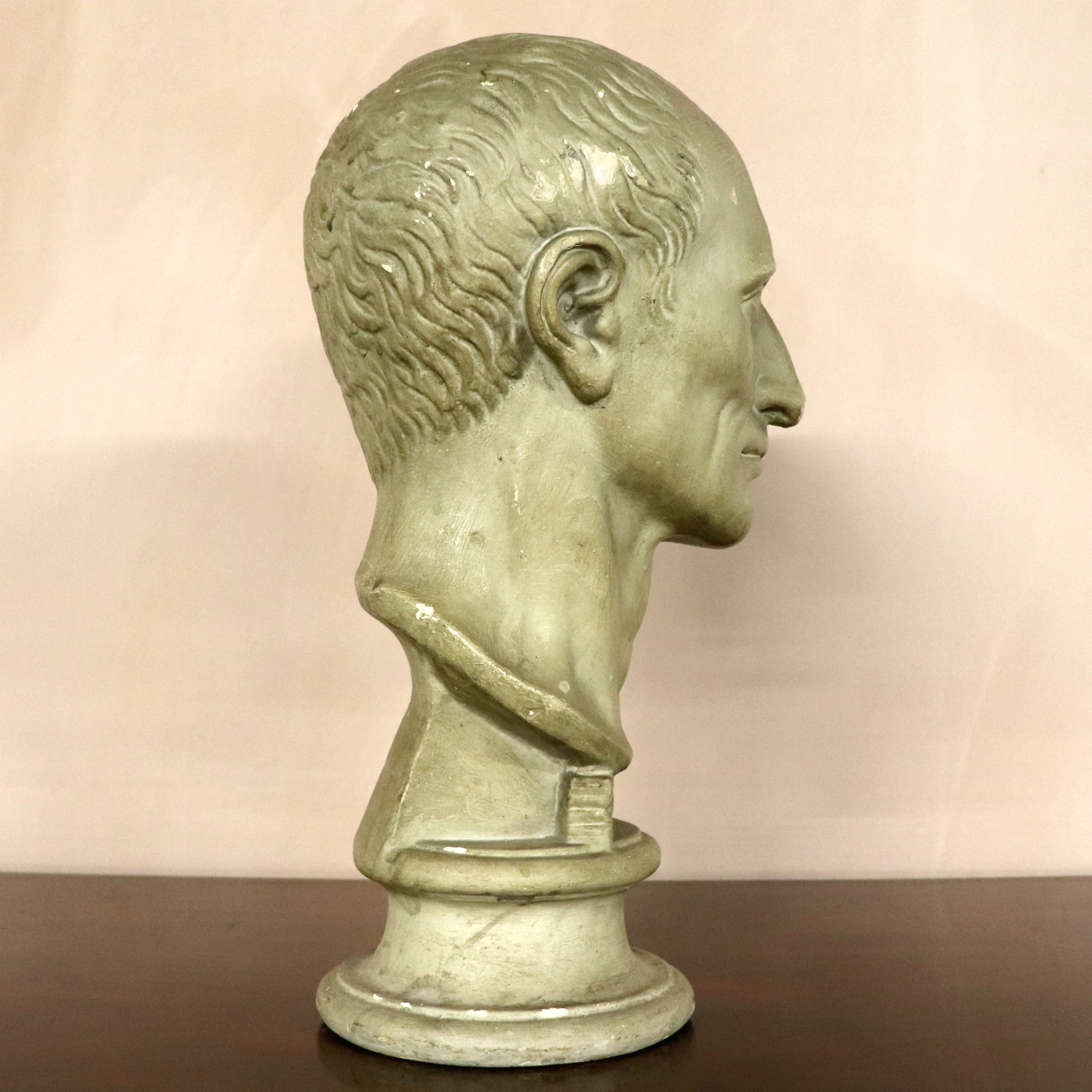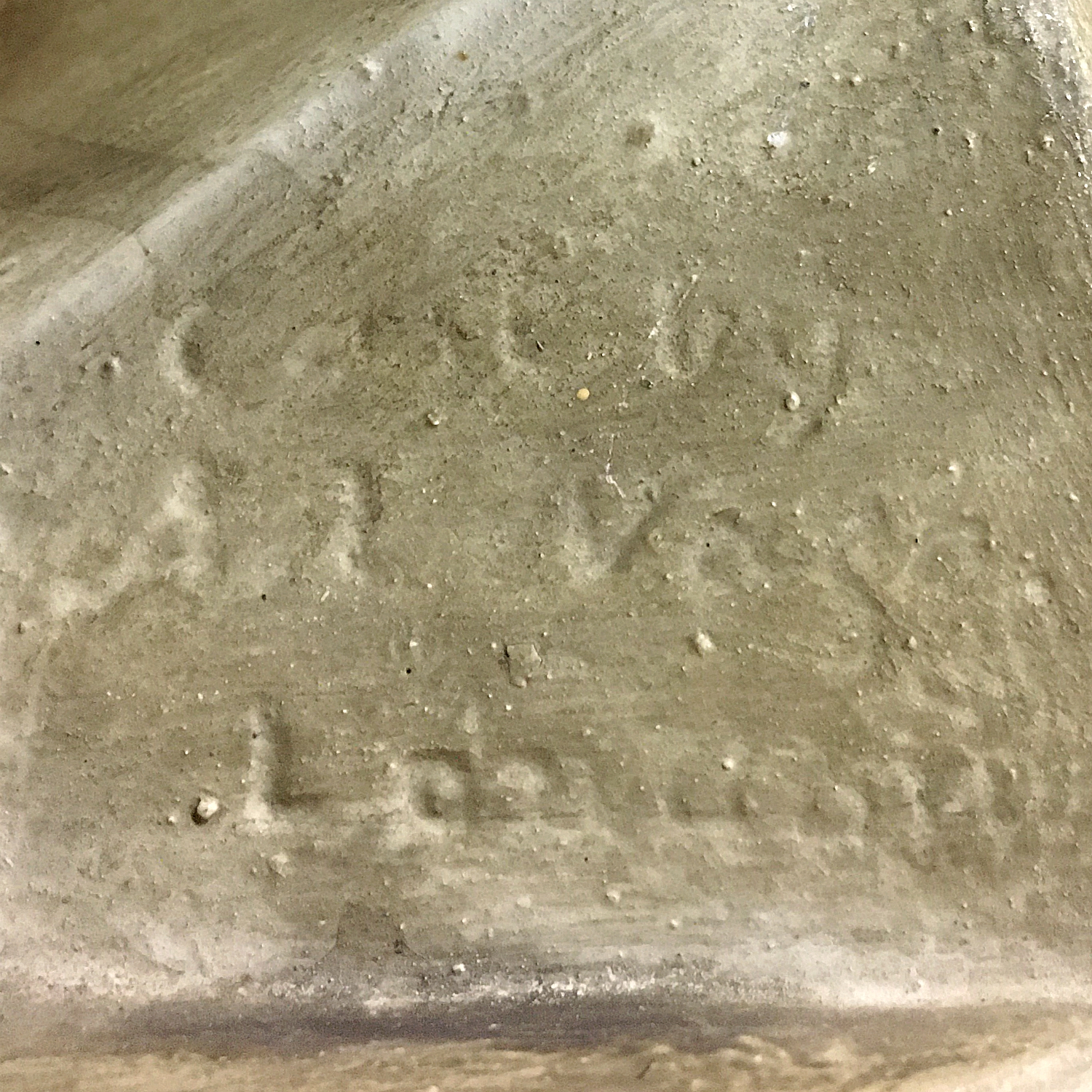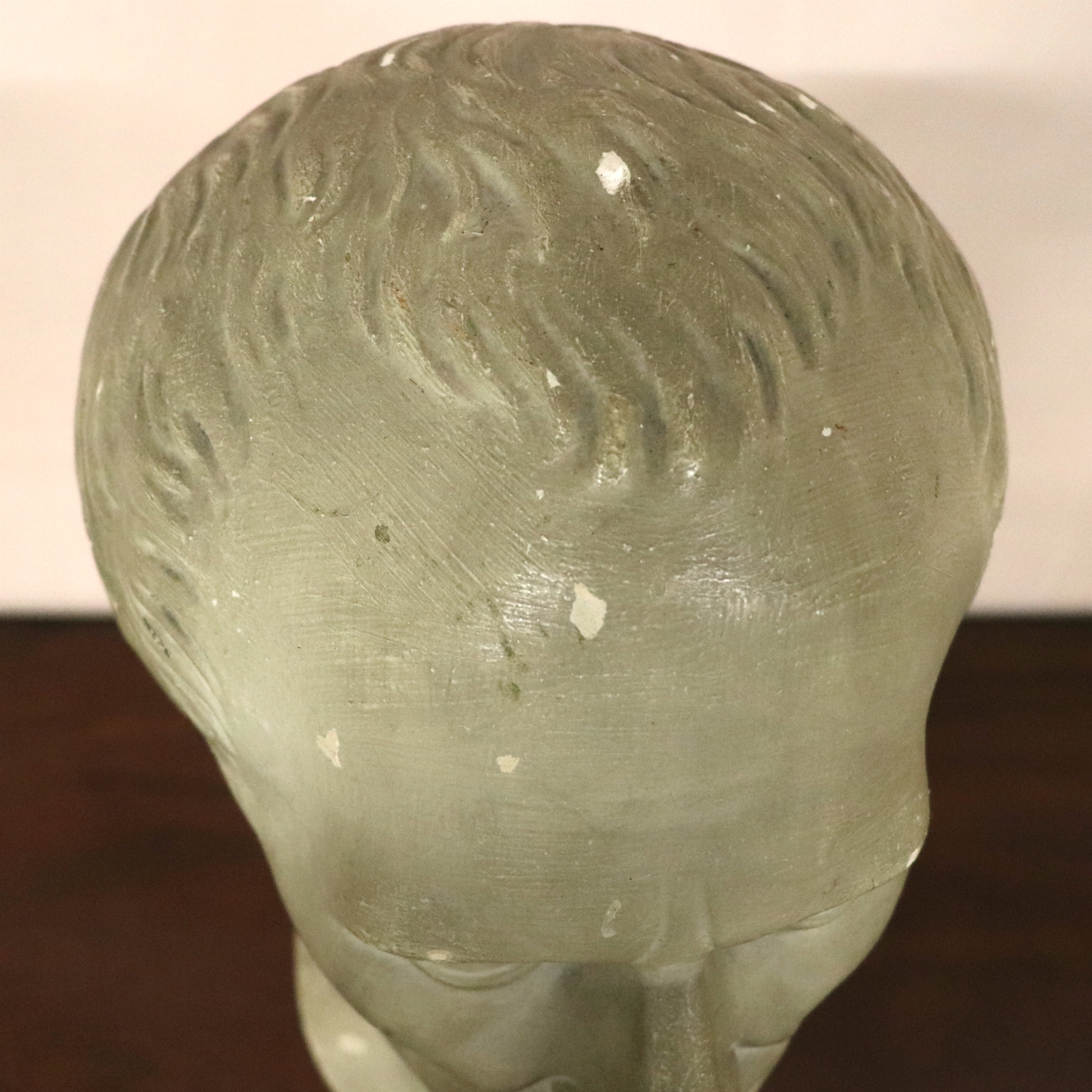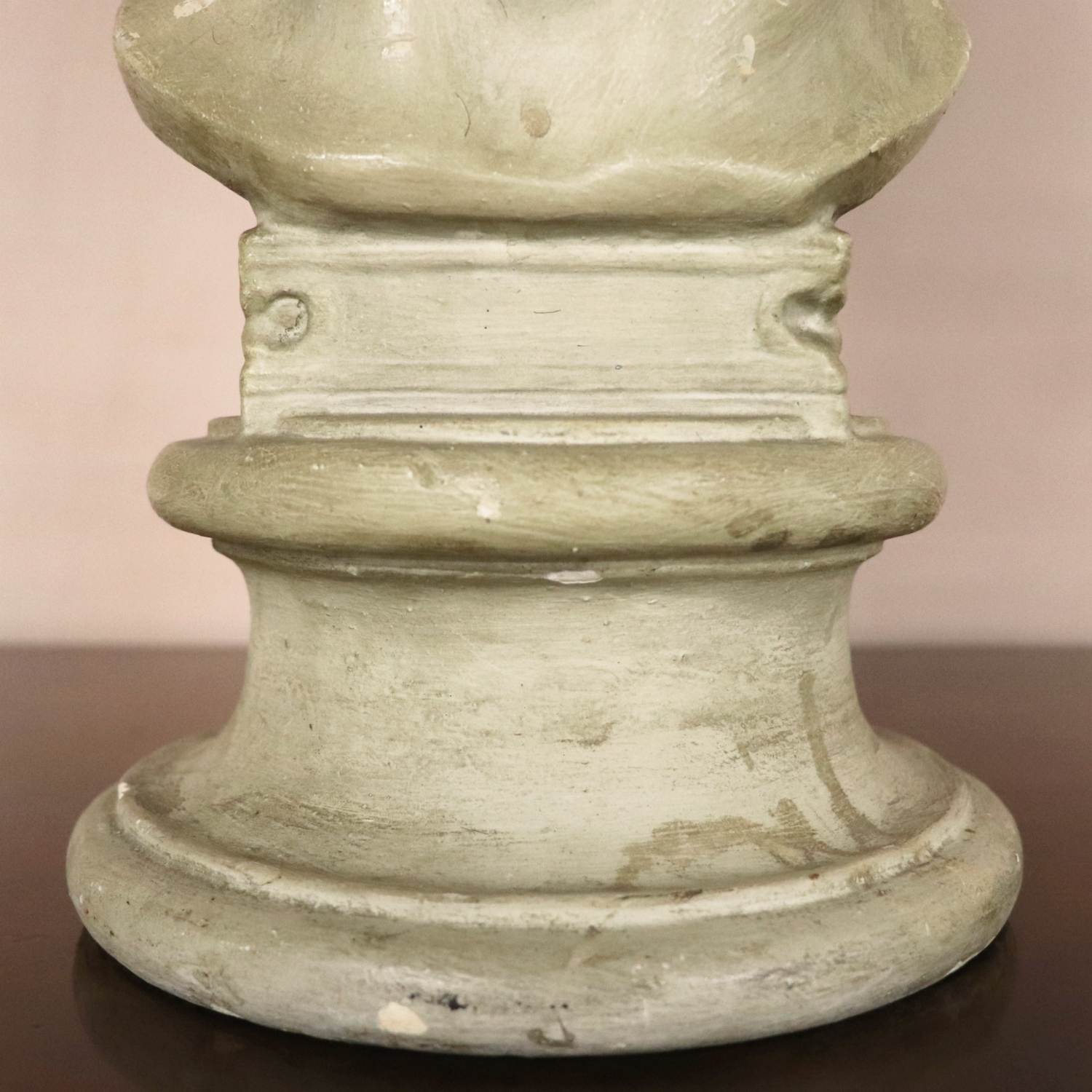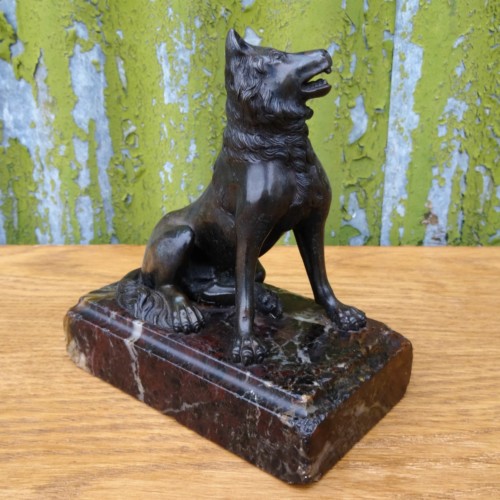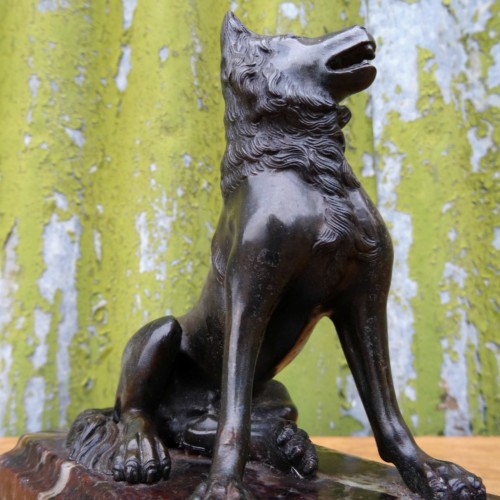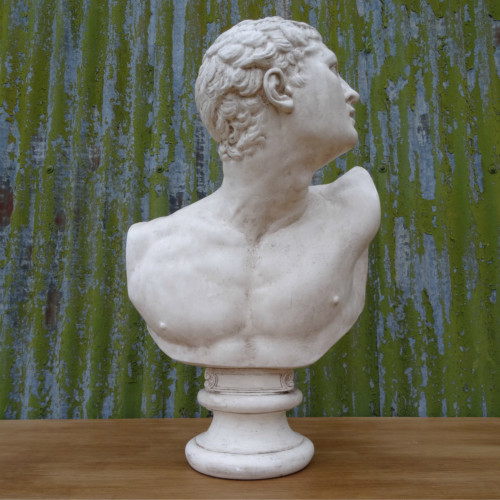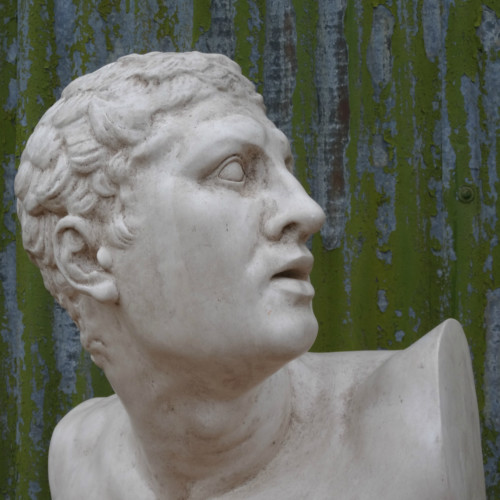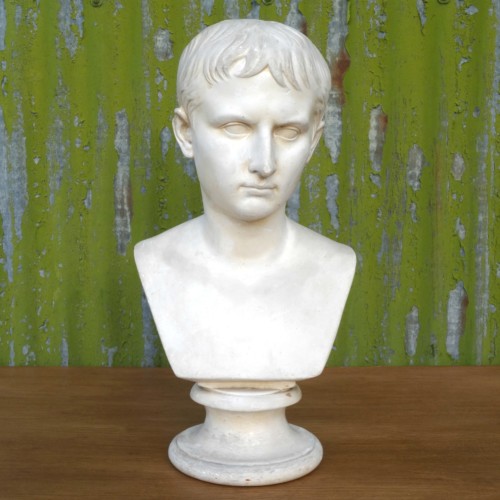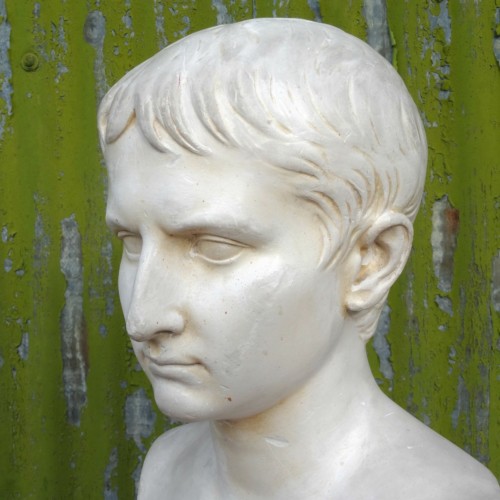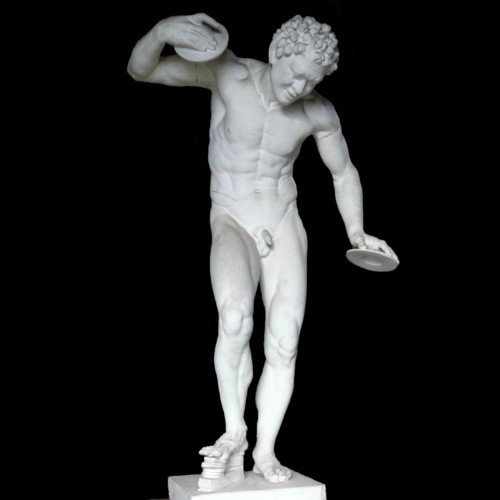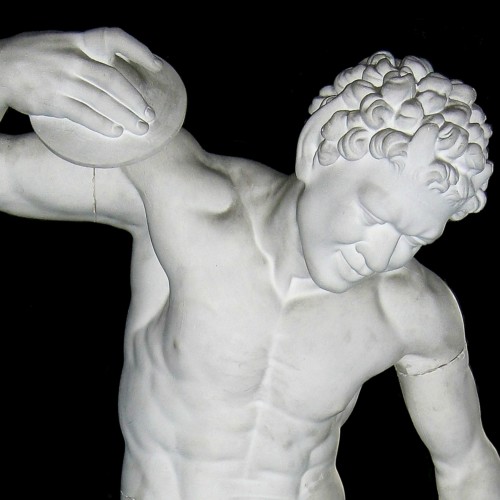A rare plaster library bust of Julius Caesar, by Ambrose Lewis Vago, English, circa 1880, in original grey finish, indistinctly inscribed ‘Cast by A. L. Vago, London’.
Footnote
Ambrose Lewis Vago (1839-1896) was born in Holborn, London, the son of Ambrogio Vago, an Italian immigrant figure maker. Ambrose Vago is listed in 1861 as a phrenological bust maker at 111 Gray’s Inn Lane, in 1871 as a moulder at 114 Gray’s Inn Lane, and in 1881 as a modeller and phrenological bust maker.
This rare bust is a copy of the ‘Tusculum bust’, said to be the only extant portrait taken of Gaius Julius Caesar in his lifetime.


